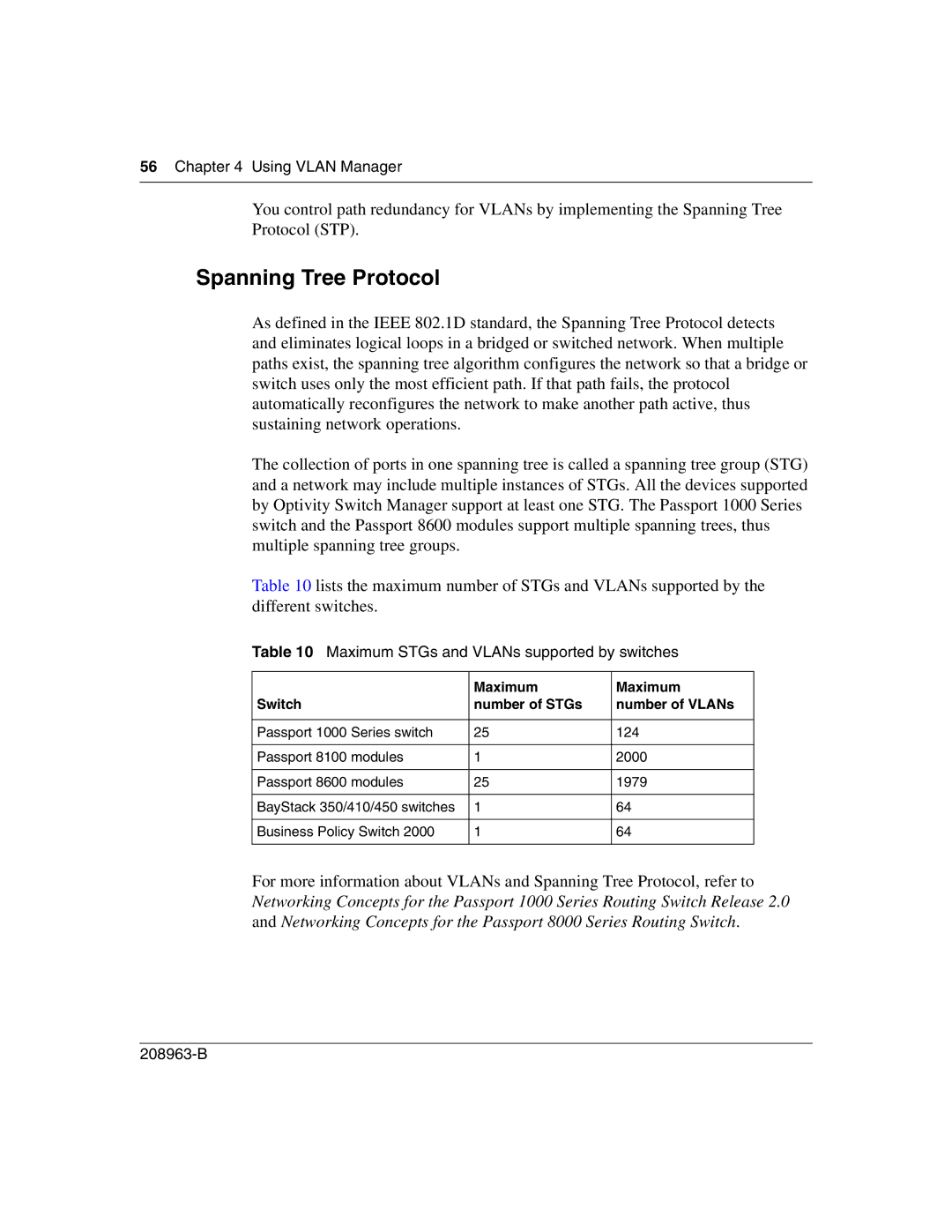
56Chapter 4 Using VLAN Manager
You control path redundancy for VLANs by implementing the Spanning Tree Protocol (STP).
Spanning Tree Protocol
As defined in the IEEE 802.1D standard, the Spanning Tree Protocol detects and eliminates logical loops in a bridged or switched network. When multiple paths exist, the spanning tree algorithm configures the network so that a bridge or switch uses only the most efficient path. If that path fails, the protocol automatically reconfigures the network to make another path active, thus sustaining network operations.
The collection of ports in one spanning tree is called a spanning tree group (STG) and a network may include multiple instances of STGs. All the devices supported by Optivity Switch Manager support at least one STG. The Passport 1000 Series switch and the Passport 8600 modules support multiple spanning trees, thus multiple spanning tree groups.
Table 10 lists the maximum number of STGs and VLANs supported by the different switches.
Table 10 Maximum STGs and VLANs supported by switches
| Maximum | Maximum |
Switch | number of STGs | number of VLANs |
|
|
|
Passport 1000 Series switch | 25 | 124 |
|
|
|
Passport 8100 modules | 1 | 2000 |
|
|
|
Passport 8600 modules | 25 | 1979 |
|
|
|
BayStack 350/410/450 switches | 1 | 64 |
|
|
|
Business Policy Switch 2000 | 1 | 64 |
|
|
|
For more information about VLANs and Spanning Tree Protocol, refer to Networking Concepts for the Passport 1000 Series Routing Switch Release 2.0 and Networking Concepts for the Passport 8000 Series Routing Switch.
